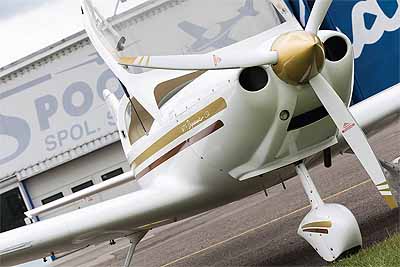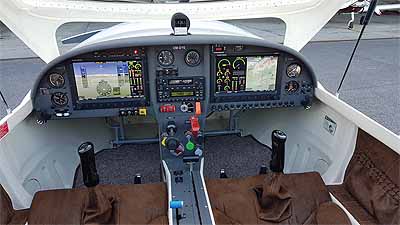Aerospool
Taking flight
By adhering to the most stringent of standards and focusing on quality, Aerospool has become a name synonymous with optimum flying experiences
Formed by enthusiastic yet amateur pilots from Aero club Prievidza, Aerospool was established in 1991, with a focus on aero products. During this first year, it was challenging to develop a  customer base in the aerospace market, so many non-aeronautical products were developed as well as the fuselage of the glider WT3. Committed to gaining a foothold in its chosen market, Aerospool began producing fibreglass trailers for one-seat and two-seat gliders. Laminated manually, the company manufactured more than 200 trailers and exported them across the globe.
customer base in the aerospace market, so many non-aeronautical products were developed as well as the fuselage of the glider WT3. Committed to gaining a foothold in its chosen market, Aerospool began producing fibreglass trailers for one-seat and two-seat gliders. Laminated manually, the company manufactured more than 200 trailers and exported them across the globe.
In 1991, the company gained its first order for the cabin of UL aircraft Sky Boy, for which Aerospool manufactured everything; this included the prototype, forms and finally, more than 100 cabins of this type. Other components made by the company were developed for aircrafts WT6, Koala, Windex and Eurofox. In 1992, the company began to develop its own UL aircraft, Compact, and went on to become a supplier of works and services for the company Schempp-Hirt in 1993 – a role it maintains to this day.
Progressing forward with its goal, in 1996 Aerospool began a new project, the development of its own aircraft, Impulz. Developed as a prototype, Impulz was redesigned and born again as WT9 Dynamic, which went onto become Aerospool’s best-known aircraft. “The first prototype’s flight test took place in 1999, with development of the second prototype taking only one year. Since 2001, when we started serial production, we have produced and sold more than 700 units of aircraft and KITs. These are mainly sold to private clients, aeroclubs and flying schools, with most of the aircraft flying in France, Germany and Brazil,” says Ján Hrabovský, CEO of Aerospool.
Currently employing 110 personnel that operate at three modern production halls, which are located directly at airfield Prievidza (LZPE), the company has maintained the focus on quality that it has had since its inception to ensure customers receive the very best product. “We utilised production procedures and quality management that we learnt during production for the company Schempp-Hirt, applying these into the production of our microlight aircraft WT9 Dynamic – our prime product that had light sport aircraft (LSA) certification completed recently,” highlights Ján.
The WT9 Dynamic LSA – Club, a popular, small two-seater aircraft, made from glass-fibre and equipped with a well-established Rotax engine 912 ULS, is the newest product to be developed by Aerospool. Like its other LSA, such as the WT9 Dynamic ultra-light, which has been manufactured and exported to 20 countries across the globe since 2000, the WT9 Dynamic LSA – Club is to be used mainly for aviation tourism, training and touring, with each WT9 Dynamic custom made in accordance to each customer’s specifications and preferences. This flexibility further strengthens Aerospool’s role as a company able to ensure increased speed, safety, comfort and experience for customers. Producing the WT9 Dynamic LSA or ultra-light version at a cutting-edge facility, the company is under supervision by the Civil Aviation Authorities of Slovak republic, which assures each customer receives a superior product.
Using progressive construction design and advanced materials such as sandwich shells and carbon composites, this aircraft is light weight. Moreover, it is one of only a few types in the ultra-light range that allows customers to choose from two versions: fixed or hydraulic retractable landing gear.
In more detail, the components used to create the aircraft includes the fuselage; this consists of sandwich shells where the main construction element is carbon fibre, which ensures low weight, mixed with high strength and toughness; the main landing gear such as laminated spring gear and steering nose gear that is attached to a firewall by a bungee cord shock absorber mechanism, plus hydraulic retractable gear is also an option. Controls are as standard, with control sticks on both sides in a basic version that has no adjustable rudder pedals. Meanwhile, the canopy frame is made of carbon composite, which thus ensures high strength and stiffness; this ergonomic design supports crew comfort as the inner cabin width, at 115cm, offers the most space within the LSA category. Furthermore, the acrylic glass canopy, ensures exceptional visibility for users.
Recently certified according to the European Aviation Safety Agency (EASA), the new WT9, will shortly progress into serial production – a development that is five years in the making as Aerospool strived to complete the certification process for the LSA category. “Certification of the first version of the WT9 Dynamic LSA – Club lasted longer than we expected. This is because although we didn’t have any experience we wanted to manage it on our own. Gradually we put together a certification team, which will be able to handle independent certification of other versions over the coming years. Completion of certification opens up the door, not only to markets in Europe, but also to other continents that have similar regulations as CS LSA,” says Ján.
With Aerospool soon to begin production of its newest aircraft, Ján anticipates that the company may need to hire up to 30 more employees in order for Aerospool to meet the growing needs of customers as it also seeks to gain certification of other aircraft over the coming years. “Within a longer time period, our goal is to gain certification of KIT four-seater aircraft WT10 Advantic,” concludes Ján.
Aerospool
Products: Manufacturers of ultralight and kit/ready to fly aircraft and major components for gliders
